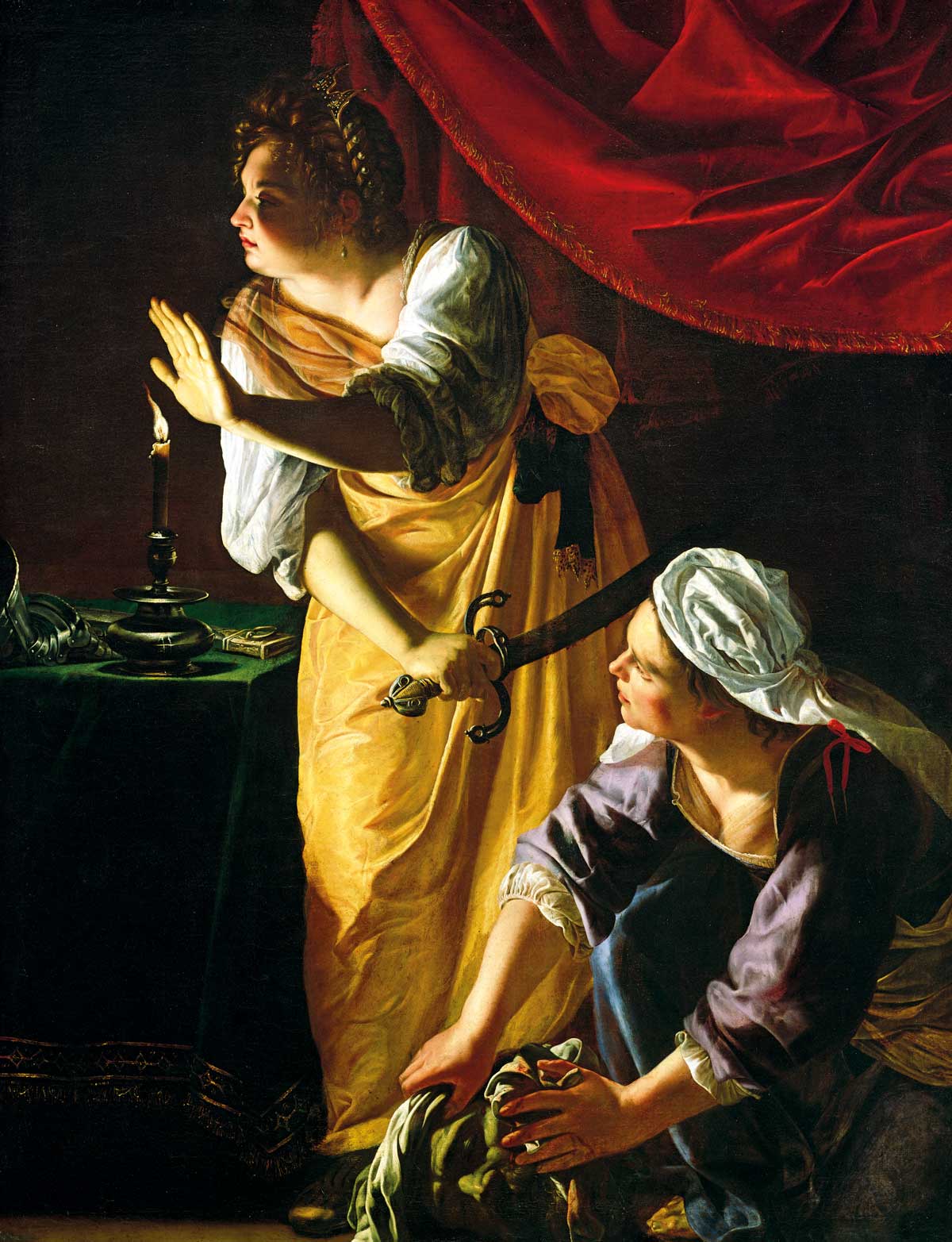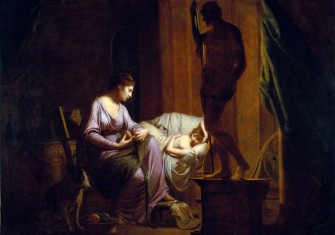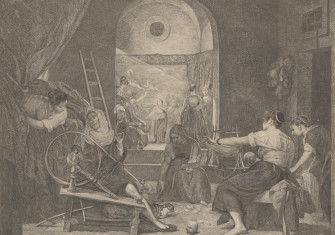Judith and Holofernes
A tale of female revenge, power and solidarity.

Abra, the maidservant of Judith, a Jewish widow renowned for her beauty and charm, wraps the severed head of the Assyrian general Holofernes in a bag. He has been murdered, brutally, by Judith, immediately after she had seduced him. In doing so, she has saved Israel from its oppressor. The tale is told in the Old Testament Book of Judith.
This painting, now in Detroit, Michigan, is one of four devoted to this subject by the Italian Baroque artist, Artemisia Gentileschi: the others are in Florence, Naples and Cannes.
Caravaggio, like her a master of chiaroscuro, was a close friend of her father Orazio, also a painter: being the daughter of an artist was one of the few entry points to the profession for a woman of the time. Aged 12, her father widowed, she became the matriarch of the family. When Artemisia was 13, the turbulent Caravaggio, her greatest and most enduring artistic influence, had to flee Rome, having stabbed a man to death in a brawl: Caravaggio, a man of the streets and alleys and a connoisseur of low life, always carried a dagger. His victim had links to the papal court. Artemisia was then given lessons by another artist, another friend of her well-connected father, highly regarded in his day, Agostino Tassi. In 1612, when she was 17, he was accused of raping her.
A trial ensued lasting more than six months, during which Artemisia – not Tassi – was tortured under questioning: she was forced to endure the sibille – ropes tightened around her fingers, like the wedding ring Tassi had promised her, she claimed sarcastically. But she remained utterly defiant before the court, consistent throughout in her allegation of rape: ‘It is true, it is true, it is true, it is true’, she yelled. But Tassi’s friends in high papal places pulled strings. He was cleared of the allegations and Artemisia left Rome, with the shadow of shame and dishonour hanging over her, to travel throughout Italy, mastering her prodigious skills. She would seek revenge on this patriarchal culture in the only way she knew: through her art.
Judith and Maidservant with the Head of Holofernes is the least blood-soaked and violent, though perhaps the most furtive, of the four compositions she created on this theme. The art historian Letizia Treves judged that, with this work ‘Artemisia rightly takes her place among the leading artists of the Baroque’.
The crescent, the symbol of Artemis, patron and protector of young girls, which Artemisia used repeatedly, is all that remains clearly visible of the head of the richly draped Judith, who is never depicted without a weapon (memories of Caravaggio, perhaps?). She, like Artemisia, is wary of the predations of men. But the masterstroke of this particular composition is the complicity of her maidservant Abra, who stuffs the grimly green head of Holofernes into the bag as the pair seek their escape from the Assyrian enemy. Artemisia knew all too well that if women are to make a mark on this unjust world, they must do so together.






